german omicron data
more evidence of vaccine and booster escape and negative VE
this data recently emerged from the robert koch institute in germany.
(no, this has nothing to do with the american koch brothers. it’s a common name and this is a quasi-government health agency.)
data such as this is easy to misinterpret and nearly everyone is doing it incorrectly, so i’d like to walk through why, counter to what many are claiming, this data actually shows that boosters have negative VE (vaccine efficacy).
caveat: this is a small and likely incomplete societal dataset. the sample size is possibly large enough to give us a sense of outcomes, but as with all societal data, it’s difficult to know what bias may be injected by self selection for testing and for vaccination. error bars are likely meaningful.
but we work with what we have, not what we would prefer, so let’s take a look:
this is the summarized raw data:
- 4020, ergo 95,58 % vollständig Geimpfte (1137 davon geboostert) - 186 Ungeimpfte (4,42 %)
4020 cases with 2 or more doses of vaccine, 1137 of them with boosters.
186 cases in the unvaccinated.
(unfortunately, there is no breakout for 1 dose only, so i’m presuming that group has been included in “unvaccinated”)
germany is 70.5% “full vaccinated.” (per OWID) thus, by the definitions this report uses, it is 29.5% unvaccinated.
it is 38.2% boosted as of 12/30/21. it’s not clear to me if this study is using that figure or only counting as boosted those who got their booster more than 14 days ago (as many seem to count it). if this is so, the number drops to 29.3%. i will look at it both ways to try to create some bookends for the range. (if anyone can clarify, i’d be grateful)
to see what is happening more granularly, we first need to regroup the terms:
from this one can see that the 3 groups are actually fairly similar in size, but quite divergent in outcomes.
many seem to presume that because cases in the boosted are a lower percentage of overall cases than the boosted are of the overall population that this shows vaccine efficacy.
this is not, however, correct as can be readily seen once we adjust this data to a per capita level.
that data looks like this (using 83.2mm for german population)
and this makes the issue obvious.
to calculate VE, we need to compare the vaccinated cohorts to the unvaccinated. that’s the control group. there are probably some pretty significant error bars here, but this outcome is STARK. the risk ratios for all vaccinated groups are far, far higher than control.
boosting does seem to lead to a 2/3 risk reduction vs just being double vaxxed but still leaves one at 4.7X the risk of the unvaccinated.
this risk ratio leads to VE figures that are, frankly, so bad that i suspect there must be some sort of bias here. this looks too extreme to be entirely plausible and far exceeds all other data i have seen.
one possible source of this issue is definitional. if the german study is using “boosted +14 days” as its definition, then the numbers change quite a bit as the size of the boosted group shrinks and the size of double vaxxed rises causing their risk rates to converge somewhat.
another possible source of contamination is the actual act of running a booster campaign during an outbreak.
the tendency toward transitory immune suppression created by mRNA vaccine administration is well documented.
the danes found it to be on the order of 40-100% increase in the likelihood of infection in the 2 weeks following administration (with 100% likely being a better proxy for genpop as they resemble HCW’s more than NH residents). this study was during a period of relatively low prevalence and with a less contagious variant than omicron. this needle could have moved quite a lot by now.
and all this piles up, so if you are doubling the risk of a group already showing increased risk due to vaccine escape/antigenic fixation/OAS the issue may become multiplicative.
full walk through:
this issue appears, in fact, to be the actual reason that the definitions are what they are and only start counting outcomes from 2 weeks post dosing.
they have been not only hiding this nasty risk window all along, but lumping the added risk it generates into “the unvaccinated” by counting all the cases/hospitalzations/deaths it causes on the trip to full vaccination as “outcomes in the unvaccinated.”
(this is 100% deliberate. folks like pfizer do not make “mistakes” like this. they make “choices” and they clearly have all the global health agencies singing from their hymnal.)
this led certain waggish internet felines to generate a graphical analogy:
you’re a soldier pinned down in a foxhole. across the field from you is a bunker. getting into the bunker will greatly reduce your risk of being shot.
but the field you must cross is wide open to enemy fire. running across will, for a time, greatly increase your risk of being shot.
if you’re going to make the choice to run for the bunker, on what would you base it?
pharma studies and health agencies alike have been (at least as far as cases go) not only misrepresenting the bunker as safety, but calling anyone who gets shot making the high risk run to get to it “killed by staying in the foxhole".”
but a funny thing happens when boosters come into play:
now, the folks that get sick due to immune suppression from the booster get lumped not into the unvaxxed, but into the double vaxxed.
the same dirty trick that made double vaccination look more effective against cases, at least for a while, is now salting it with extra cases and making it look much worse.
it’s likely turning this data into an (even more complete) mess and highlighting the fact that pushing vaccination surges with these products during peak outbreaks is a terrible idea. you’re suppressing immune systems right when they are needed most and mistaking this shift of risk for “booster efficacy.”
interestingly, it also makes the VE issues basically impossible to hide any longer.
it could all pile up to be big enough to generate some pretty wild looking negative VE figures. (though i still suspect this german data is overblown and likely has some sort of extra bias)
i see no way to tease it out of this data at this point. it’s easily possible that this risk shifting means that getting boosted increases your overall risk of getting a case but that the data cannot show it because when it happens to you in the prime risk window, you get called double vaxxed, not boosted.
this seems like a very important hypothesis to explore and i’m anxious to find some data or a set of studies that allow it. if anyone has seen anything like that where we can really set the bayesian parameters properly around “cases from the instant you were boosted” i’d love to see it.



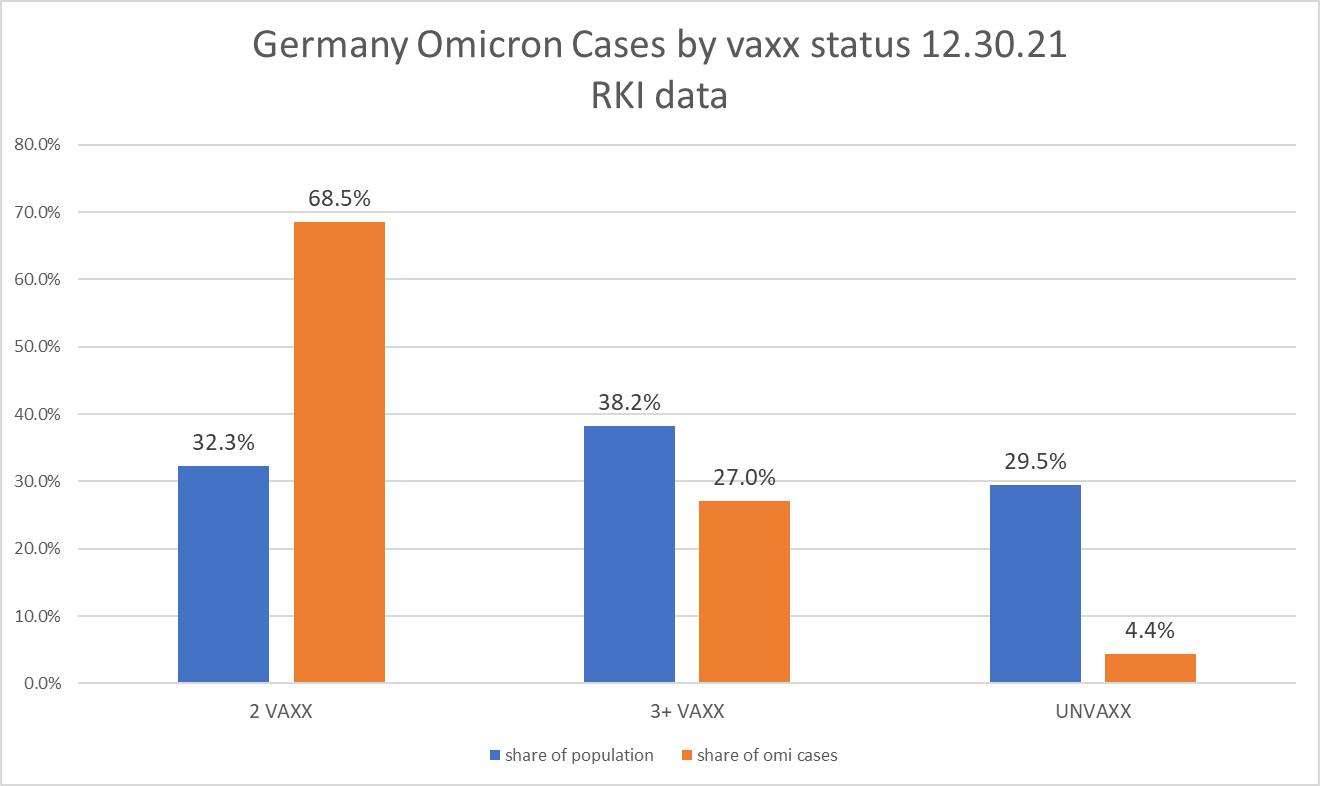

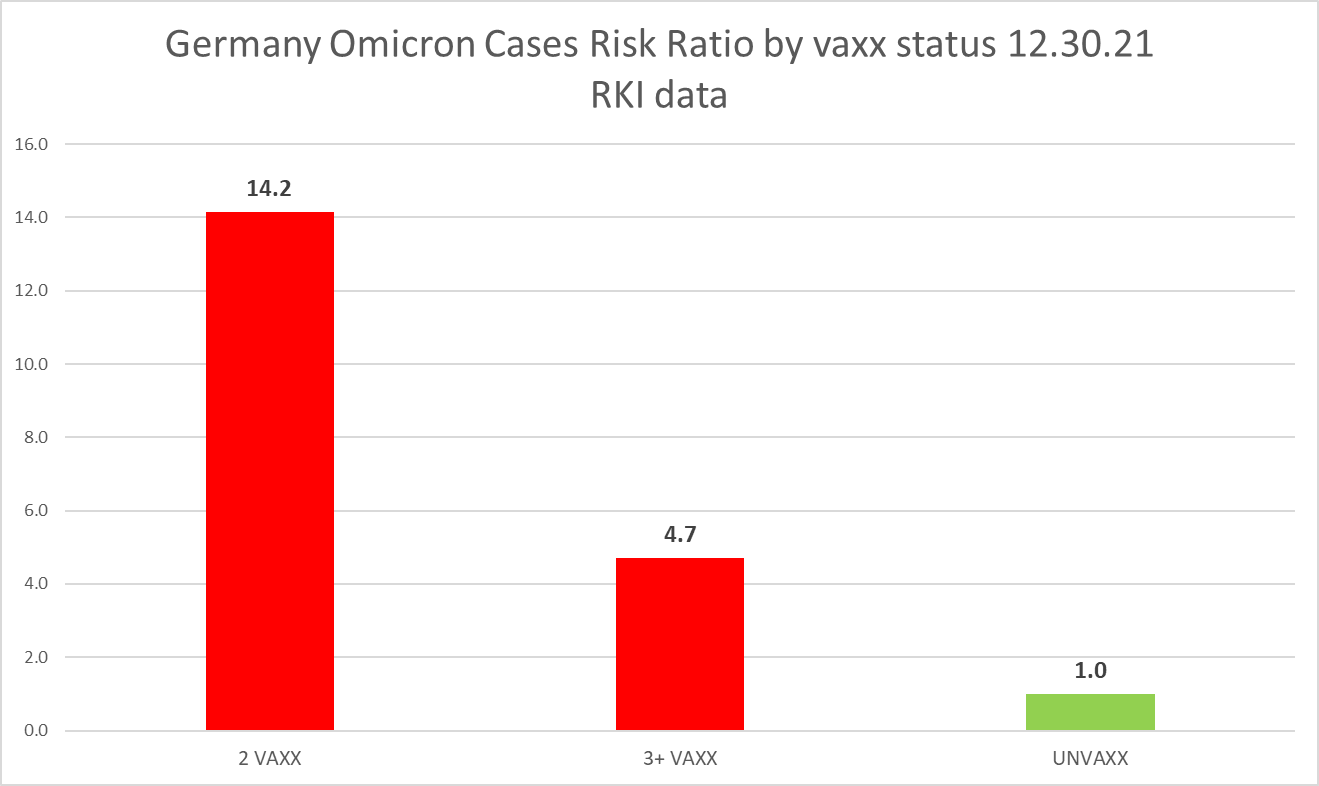
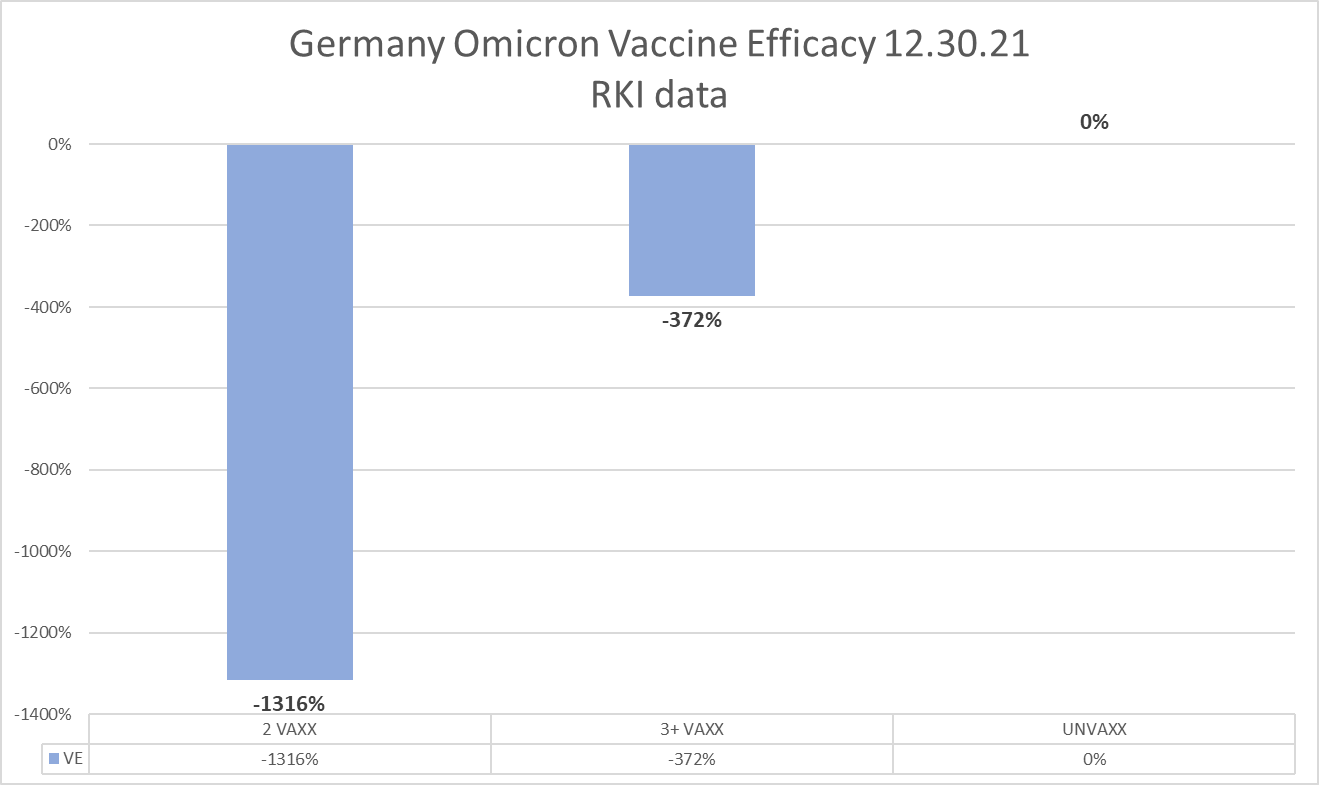
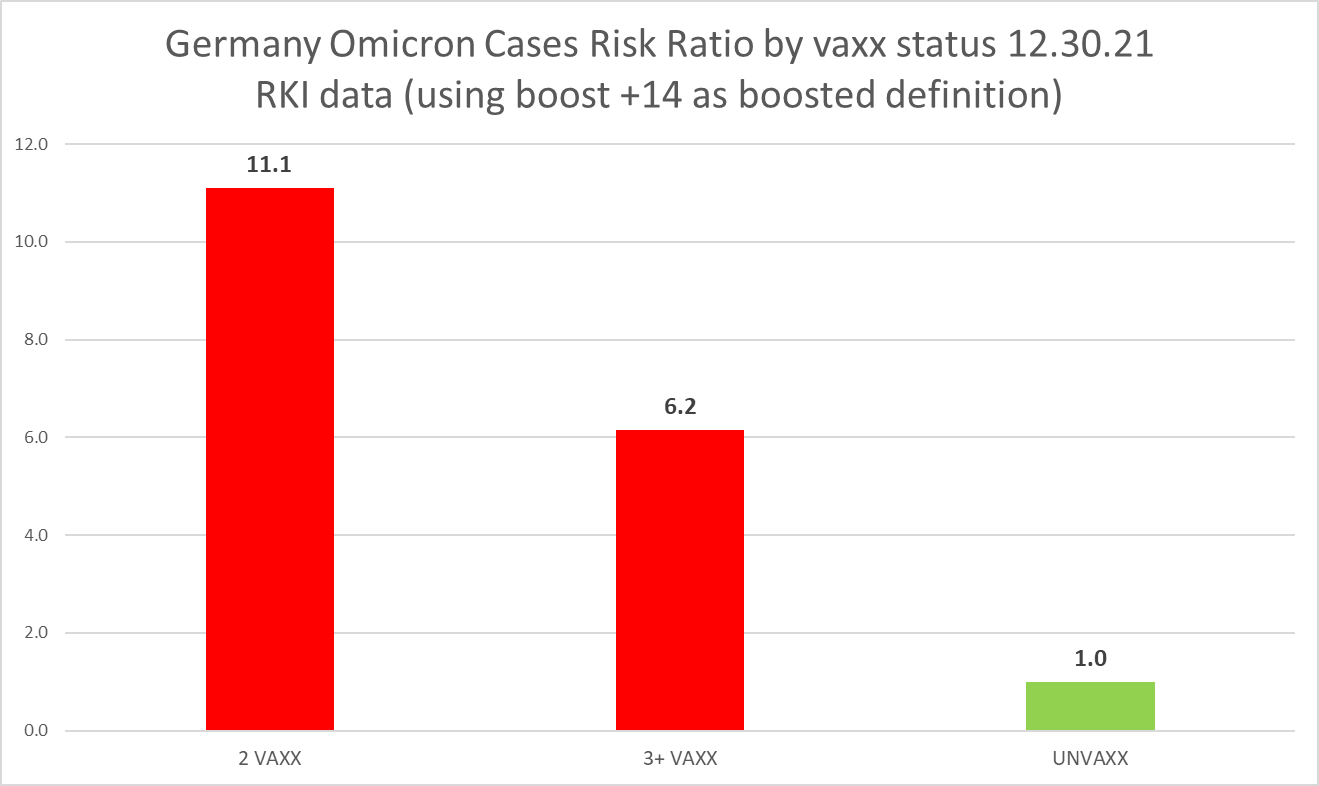
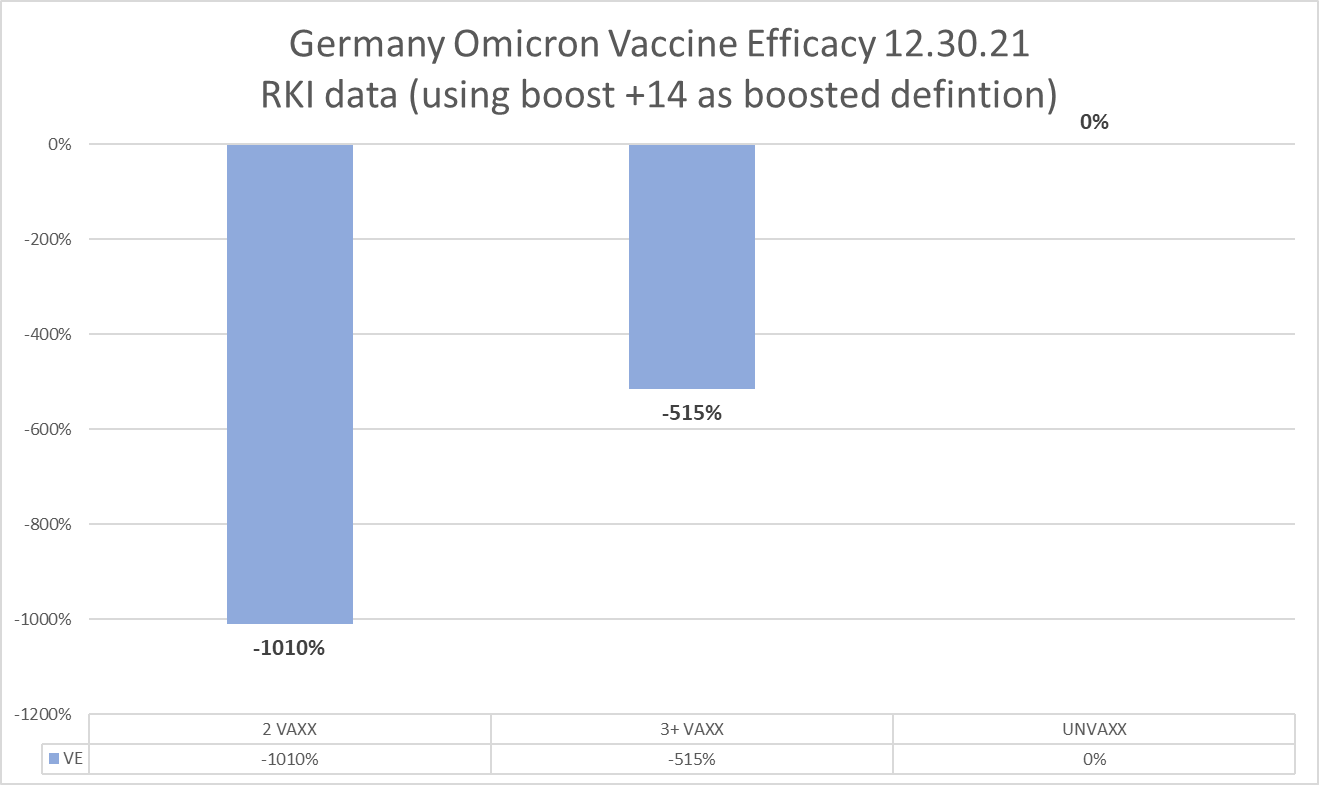



I can’t believe how well informed you are and how well you explain it all. Thanks for all the good you do.
Sadly, the more this becomes apparent the more that many jabbed persons will support mandatory jabbing of the vaxx-free out of unconscious spite.